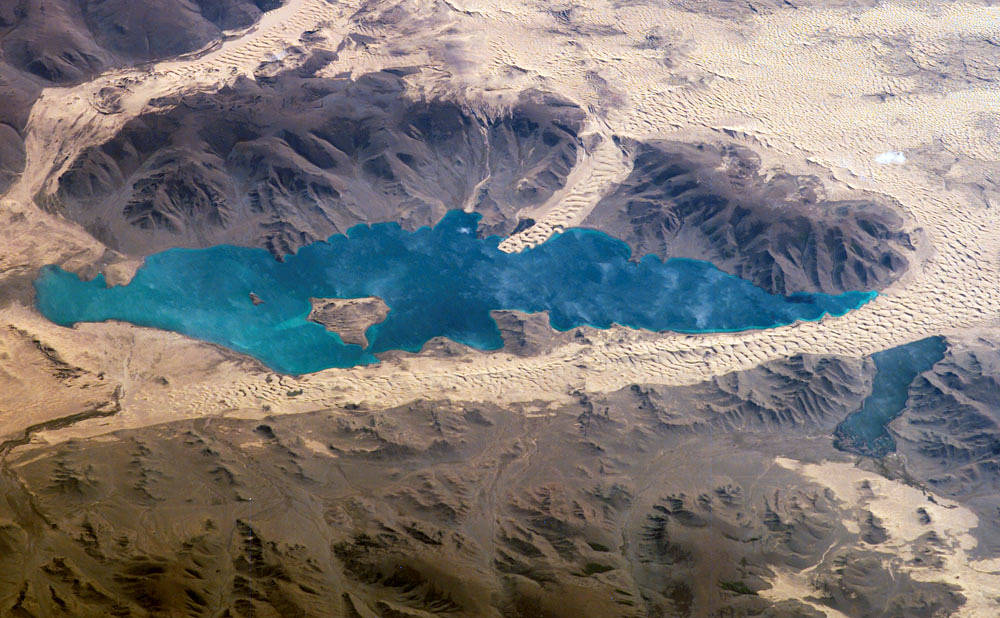
Har Nuur, or the Black Lake, is located in western Mongolia’s Valley of Lakes, part of a system of closed basins stretching across central Asia. These basins are the remnants of larger paleolakes (paleo- means “ancient”) that began to shrink approximately 5,000 years ago as regional climate became drier. Like other lakes in the region, Har Nuur relies on precipitation, growing in the spring and shrinking in the summer. This process of growth and shrinkage produces a variety of wetland habitats, as well as resting points for large numbers of migratory birds.
This photograph captures the dynamic nature of the landscape of Har Nuur. The lake is encircled by sand dune fields that encroach on the lower slopes of the Tobhata Mountains to the west and south. Gaps in the mountains have been exploited by sand dunes moving eastward, indicating westerly winds. The most striking example is a series of dunes entering Har Nuur along its southwestern shoreline. Here, the dunes reflect the channeling of winds through the break in the mountain ridgeline, leading to dune crests lying perpendicular to northwesterly winds. Another well-developed line of dunes appears between Har and Baga Lakes; while these dunes appear to cut across a lake surface, the dunes have in fact moved across a narrow stream channel.
This image was acquired Sept. 7, 2006, by the crew of the International Space Station.Image credit: NASA























